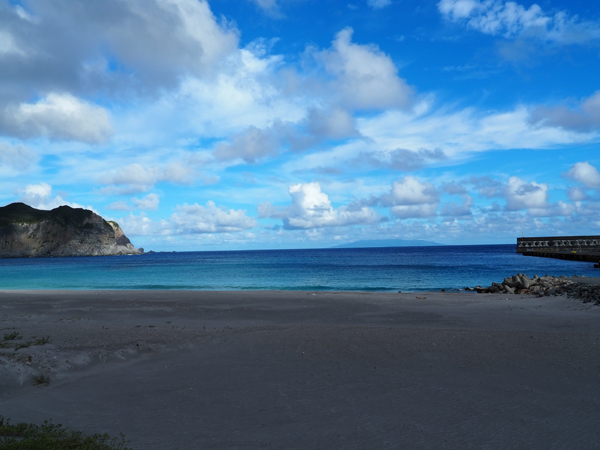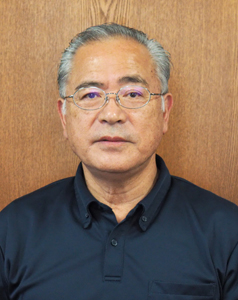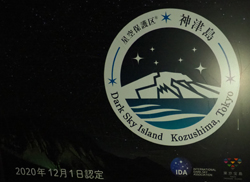Series ”Visiting the village” in search of the key to regional revitalization 17 Kozushima Village Tokyo

Kozushima is one of the Izu Islands, and is an isolated island that belongs to Tokyo, about 45 minutes by plane from the city. Kozushima Village places emphasis on tourism, such as developing the “Sustainable Tourism Loop Kozushima Model”. The idea is to create jobs and increase the number of islanders through tourism. (Kitajima Kei)

前田村長(Mayor Maeda)
Tokyo has 11 remote islands. Kozushima is one of them. Kozushima Village is a municipality consisting of Kozushima, Zenizu, Onchijima, Ginaejima, and others. The population is about 1,750. The aging rate is 34%.
On Monday, October 7th, I flew to Kozushima in a Cessna from Chofu Airport in Chofu, Tokyo. The flight time was about 45 minutes. While I was lost in thought, I arrived at Kozushima Airport. It is by no means close, but it didn’t feel like a long journey either. My honest impression is that it is easy to get to considering it is an isolated island.
After a 15-minute drive from the airport, you can see the port, which is the center of the village. The Kozushima Village Office is also near the port.
The village is focusing on tourism as a key to revitalizing the area.
The area was originally a prosperous area for agriculture, fishing, and tourism, but agriculture has declined and it is becoming difficult to make it a viable industry. In the past, the area produced about 200 million yen a year from green beans, peas, leatherbacks, and angelica leaves, but this has now fallen to just under 20 million yen.
Village Mayor Hiroshi Maeda says, “One factor is a lack of manpower, but more than anything, the decline of agriculture is due to the fact that people can no longer make a living from farming. To begin with, the land is small and production is limited. Shipping to the mainland is expensive, and the longer it takes, the less fresh the produce is. In this situation, it is difficult to compete with farmers in the mainland.”
Currently, with an aim to promote local production for local consumption, the village is developing greenhouse cultivation and other methods to provide ingredients to tourists.
Fishing remains the village’s main industry. At present, alfonsino fishing is booming, accounting for 80% of the total catch.
Although things seem to be going well, the future is full of uncertainty. This is because, due to the effects of global warming, the seawater temperature is rising, limiting the types of fish that can be caught. The alfonsinos are also getting smaller, and fishing grounds are becoming increasingly farther away.
“We used to be blessed with a variety of seasonal seafood, such as swordfish, squid, and spiny lobsters. However, the rising seawater temperature prevented seaweed from growing, and the shellfish that feed on the seaweed disappeared. Spiny lobsters, which feed on shellfish, have been washed away toward Fukushima,” said Mayor Maeda.
Fishing is the village’s main industry, but with this background, there is a growing trend of anxiety about the future, especially among young fishermen.
According to a fisherman at the port, the seawater temperature in October used to be around 20 degrees, but now it can reach over 25 degrees.
As for tourism, riding the wave of the remote island boom in the 1960s, there was a time when 100,000 tourists visited the island annually. At that time, there were about 200 accommodation facilities, and it is said that they made a considerable profit. The remote island boom is a thing of the past, but even now, 40,000 to 50,000 tourists visit the island annually. However, the number of accommodation facilities has decreased to about 40. “The island has many tourist attractions and various tourist resources. However, since the remote island boom has passed, more and more people are unaware of Kozushima. That’s why we are now focusing on public awareness activities,” says Mayor Maeda. As part of this, they are promoting the “Sustainable Tourism Loop Kozushima Model.” In collaboration with NTT East Japan, TV Asahi, ANA NEO, and ANAX, they have developed a virtual travel experience app and an app that consolidates all the information you need for travel. They are working to increase the number of Kozushima fans. They are also focusing on the film commission, which attracts film and drama locations in connection with tourism. They have already received several inquiries. Kozushima is also suffering from a declining population. 25 years ago, there were about 2,300 people, but now there are about 1,750.
On the other hand, Kozushima has a high birth rate among remote islands, with about 10 to 15 newborns per year. On the other hand, 20 to 30 people pass away due to old age.
“Children leave the island after graduating from school. The reason is that there are no jobs on the island. This is the main cause of accelerating the population decline, and many young people want to return if there are jobs. That’s why we want to create industry on the island. We are also focusing on tourism to create jobs,” says Mayor Maeda.
In fact, many of the young people living on the island are islanders who once left the island for work, etc., and then returned after finding work on the island. It is not uncommon for them to bring their spouses and children with them when they return.
“Rather than islanders marrying each other, it is more common for islanders to marry people from the mainland and return to the island. Some people visit the island for tourism, fall in love with it, marry islanders, and settle there,” says Mayor Maeda.
Although the need for digital transformation is felt, it has not yet been fully implemented. The reason is a lack of human resources. Currently, the town hall is struggling to secure staff. They are constantly recruiting, but it is difficult to get enough people.
Mayor Maeda says, “As the population declines, we are focusing on DX that can replace human power. We would like to promote the introduction of DX that can supplement manpower.”
Stargazing in a dark, beautiful night sky

神津島星空保護区のロゴマーク(Kozushima Starry Sky Preserve logo)
The American non-profit organization Dark Sky has established a “Starry Sky Protection Area Certification System” to protect and preserve the dark, beautiful night sky that is free from the effects of light pollution. Kozushima is the first area in Tokyo to be certified as a starry sky protection area. Kozushima holds stargazing events where island guides introduce the charm of the starry sky.
I participated in the viewing event on October 7th. We gathered at Yotane Square at 8:15 p.m. There were two participants that day: me and a young man. The guide, Yoshimi, is a migrant who settled in the area four years ago. He said he moved here because of a connection with a friend. He usually works at a gas station. Guide is a side job.
It was as hot as a summer day on this day. It’s rare to have such a hot night on Kozushima in October.
Speaking of rare, it’s also rare to see such a beautiful starry sky.
Yoshimi said, “It’s been a long time since I’ve seen such a beautiful starry sky. The weather on the island is changeable, and it’s not uncommon for the stars to be hidden by clouds and not be visible.”
In October, the Draconid meteor shower reaches its peak. As a result, many shooting stars appear. I saw shooting stars several times. In fact, this was the first time I’d ever seen a shooting star, and I was quite excited inside.
“You can see the Milky Way clearly. Tonight is very lucky,” said Yoshimi.
There are a total of 88 constellations, but only 40-50 can be seen from Kozushima.
“What constellation are you in, Kitajima?” “Libra.” “Libra is beyond Scorpio, and you can’t see it at this time of day. At this time of year, it’s probably before 7pm.” As expected, Yoshimi knows a lot about the constellations.
“I want to preserve and pass on this beautiful starry sky to future generations. That is the thought behind why I work as a starry sky guide,” said Yoshimi.
※Translating Japanese articles into English with AI
